Today’s Current Affairs:8th October 2025 for UPSC IAS exams, State PSC exams, SSC CGL, State SSC, RRB, Railways, Banking Exam & IBPS, etc
Table of Contents
Karnak Temple:
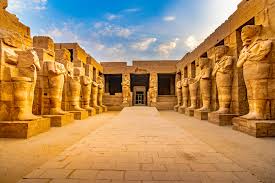
A sweeping new geoarchaeological study has revealed how Egypt’s famed Karnak Temple complex rose from an island amid Nile floods to become one of the ancient world’s most enduring sacred centers.
- The Karnak Temple, or rather the complex of temples of Karnak in Luxor, Egypt, is one of the most impressive of Ancient Egyptian sites and once formed part of the city of Thebes.
- It is located in Karnak, Luxor Governorate, south of Egypt on the east side of the Nile River bank.
- It was built between 2055 BC and around 100 AD.
- It was built as a cult temple and was dedicated to the gods Amun, Mut, and Khonsu.
- Being the largest building for religious purposes ever to be constructed, the Karnak Temple was known as “most select of places” by ancient Egyptians.
- While the height of its importance was during the New Kingdom, and during the reigns of famous pharaohs such as Hatshepsut, Tuthmose III, Seti I, and Ramesses II, all contributed significant additions to the complex, construction continued into the Greco-Roman Period, with the Ptolemies, Romans, and early Christians all leaving their mark there.
- Together with the Luxor Temple and the Valley of the Kings, the Karnak Temple is a UNESCO World Heritage site.
Black Sea : In News
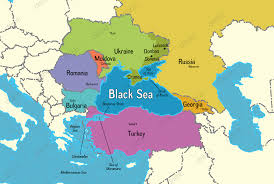
Russia recently reported destroying 251 Ukrainian drones overnight, mostly over its southwest and the Black Sea, with one targeting Moscow.
- Movement of water between the lower and upper layers of the Sea is rare.
- This creates considerable temperature and nutrient differences between these layers, with the lower layers being absolutely free of oxygen and anoxic.
- This complex water chemistry is fueled by extensive freshwater inputs from multiple large rivers and rainfall, with salt water exchanges with the Aegean Sea only through the Bosphorus and Dardanelles Strait.
Black Sea:
- It is a large inland sea situated at the southeastern extremity of Europe.
- It is one of the marginal seas of the Atlantic Ocean.
- The roughly oval-shaped body of water has a surface area of 436,000 sq.km.
- Bordering Regions:
- West: Balkan Peninsula (Southeastern Europe).
- East: Caucasus Mountains.
- North: East European Plains (Russia & Ukraine).
- South: Anatolia (Turkey, Western Asia).
- Countries bordering the Black Sea are Turkey to the south, Bulgaria and Romania to the west, Ukraine to the north, Russia to the northeast, and Georgia to the east.
- The Crimean Peninsula juts into the Black Sea from the north.
- Russia has the longest coastline (2,300 km), followed by Turkey (1,329 km) and Ukraine (1,282 km).
- It connects to the Aegean Sea (Mediterranean) via the Bosporus Strait, the Sea of Marmara, and the Dardanelles Strait.
- To its east, the Kerch Strait links the Black Sea to the smaller Sea of Azov.
- The Black Sea has lower salinity than the world’s oceans due to isolation from the Mediterranean.
- Major rivers flowing into it include the Danube, Dnieper, Southern Bug, Rioni, and Dniester.
Environmental and Strategic Importance of the Black Sea:
World’s Largest Meromictic Basin:
Anoxic zones: One of the largest anoxic basins, meaning low dissolved oxygen in deeper layers, affecting marine biodiversity.
Crucial for global trade, particularly for Russia and Ukraine’s grain and energy exports.
NATO and Russia frequently conduct naval operations in the region.
Russia’s Black Sea Fleet is stationed in Sevastopol, Crimea, making the region highly militarized.
Key Islands: Snake Island (Ukraine); Giresun Island (Turkey); St. Ivan Island (Bulgaria).
Male Mahadeshwara Hills Wildlife Sanctuary:
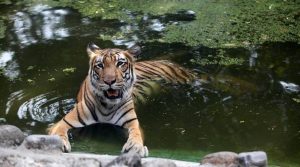
12-year-old male tiger was brutally hunted, dismembered, and buried at Male Mahadeshwara Wildlife Sanctuary recently, four months after a previous poisoning incident.
- Male Mahadeshwara Hills Wildlife Sanctuary is located at the intersection of the Western and the Eastern Ghats and falls in the Chamarajanagara District of Karnataka.
- It was declared a wildlife sanctuary in 2013.
- It is contiguous to Biligiri Rangaswamy Temple (BRT) Tiger Reserve, Sathyamangalam Tiger Reserve, and the Cauvery Wildlife Sanctuary.
- It’s the home of the famous Male Mahadeshwara Temple, dedicated to Lord Shiva, known here as Mahadeshwara.
- Male Mahadeshwara Hills is bound by the Kaveri River to the northeast and by the Palar River to the south.
- The forests of MM Hills Wildlife Sanctuary are principally of the dry deciduous type, degrading to scrub forest in the fringe areas, and are interspersed with patches of moist deciduous, semi-evergreen, evergreen and shola forests occurring at varying altitudes.
- Flora: Anogeissus latifolia, Boswellia serrata, Hardwikia binata and Chloroxylon swietenia etc.
- It is home to several animals, including elephants, Indian bison, wild dogs, leopards, foxes, sambars, spotted deer, and many species of birds.
- It is also a tiger habitat noted for its increasing number of tigers.
Viridans streptococci:
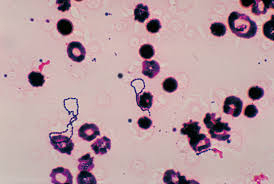
The new study, by a research team at Tampere University in Finland, examined coronary arteries from 121 sudden-death autopsies and found Viridans streptococci were the most frequent species, present in about 42% of both autopsy and surgical cases.
- Viridans streptococci is a group of common oral bacteria.
- It can form sticky bacterial layers called biofilms deep inside atherosclerotic plaques, remaining hidden from the immune system until the moment of rupture.
- Viridans streptococci are commensals in the gastrointestinal, respiratory and female genital tracts and are most prevalent in the oral cavity.
- It is a group of gram-positive cocci that are commonly associated with Infective Endocarditis (IE) and typically colonize previously damaged cardiac tissue.
- Viridans Streptococcal Biofilm Evades Immune Detection and Contributes to Inflammation.
- Importantly, the bacterial clusters were often arranged in biofilms, protective layers that allow bacteria to survive unnoticed by the body’s immune system.
- While the biofilm remains hidden, parts of it can break loose. Once released, the bacteria trigger inflammation in the artery wall.
- This weakens the fibrous “cap” covering the fatty plaque, making it more likely to rupture.
- Plaque rupture is a critical event that leads to clot formation and, ultimately, a heart attack.
New START Treaty: In News
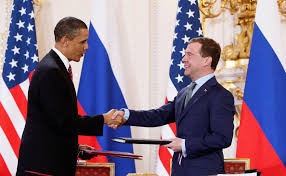
US President Donald Trump said that Russian President Vladimir Putin’s idea of the New START Treaty was a good one.
- It is known as The New Strategic Arms Reduction Treaty (New START).
- It is the last remaining nuclear arms deal between Russia and the United States of America, and it was extended for five years in 2021. (Extended the treaty till February 4 2026.)
- The New START caps the number of nuclear warheads well below Cold War limits.
- This treaty entered into force on February 5, 2011.
- The treaty concerns strategic weapons: usually long-range weapons designed to influence the outcome of a war, not merely a battle, by destroying power centres, command and control facilities, or key infrastructure.
- It was signed by then-presidents Barack Obama and Dmitry Medvedev in Prague in 2010; it came into force in 2011.
- New START replaced the 1991 START I treaty, which expired in December 2009, and superseded the 2002 Strategic Offensive Reductions Treaty (SORT), which terminated when New START entered into force.
- Both Russia and the United States announced that they met New START limitations by Feb. 5, 2018.
Jal Jeevan Mission: In News
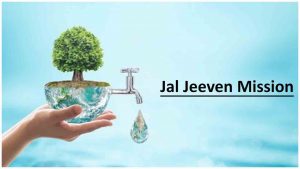
The Union Government plans to map all drinking water assets including pipelines created under its Jal Jeevan Mission (JJM) on PM Gati Shakti, a Geographic Information System (GIS)-based platform.
- Jal Jeevan Mission was launched on August 15, 2019.
- JJM is envisioned to provide safe and adequate drinking water through individual Functional Household Tap Connections (FHTCs) by 2024 to all households in rural India.
- It is based on a community approach to water and will include extensive Information, Education and communication as key components of the mission.
- Nodal Ministry: Ministry of Jal Shakti.
- Components of Jal Jeevan Mission
- Development of in-village piped water supply infrastructure to provide tap water connections to every rural household.
- Bottom-up planning: Community engagement in planning, implementation and Operation and Maintenance (O&M)
- Women empowerment: Involvement of women in planning, decision-making, implementation, monitoring, and O&M
- Focus on future generations: Provision of tap water supply to schools, tribal hostels, and anganwadi (daycare) centers
- Skill development and employment generation: Local people are skilled for building and maintaining water supply structures
- Greywater management: Reuse and recycle waste water for source sustenance
- Source sustainability: Promote groundwater recharge and water conservation
- Water Quality: Ensure safe drinking water to reduce water-borne ailments
- Funding Pattern:
- 50:50 between Centre and States
- 90:10 for Himalayan and North-Eastern States.
- In case of UTs, 100% of the funding is provided by the Central government.
Mig La Pass:
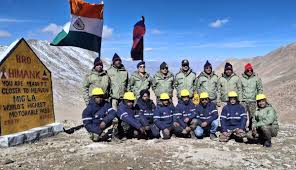
Project Himank of the Border Roads Organisation (BRO) has constructed the world’s highest motorable road at Mig La Pass, 19,400 feet above sea level in Ladakh.
- Mig La Pass is located on the Changthang Plateau in Ladakh.
- World Record Altitude: At 19,400 ft, Mig La Pass is the highest motorable road in the world.
- It connects Likaru–Mig La–Fukche, creating the third vital corridor from Hanle to Fukche near the Indo-China border.
- All-Weather Road Built with advanced features to withstand harsh winters, shifting glaciers, and oxygen-thin air, making it the highest all-season road globally.
- The Project Himank was raised on 04 Dec 1985 at Leh for the development of road communication in Ladakh region.
- It has the distinction of supporting the Army during various operations undertaken in the region.
- The Project ensures the maintenance of communication and access to strategic areas close to the Line of Actual Control with China and had been instrumental in keeping both the Leh – Manali and the Zojila axis open during Op VIJAY.
- It has done yeoman service in restoration of road communication, clearing landslides and avalanches, constructions of bridges, snow clearance and opening of air fields.
MY Bharat-National Service Scheme (NSS) Awards:
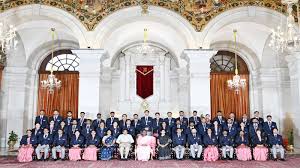
The President of India presented the MY Bharat-National Service Scheme (NSS) Awards for the year 2022-23 at Rashtrapati Bhavan.
- It was instituted by the Ministry of Youth Affairs and Sports in 1993-94.
- Objective is to honour and celebrate the outstanding contributions of youth in the fields of social service, community development and nation-building.
- It is given every year to recognise and reward outstanding contributions towards voluntary community service made by the Programme Officers/NSS Units and NSS Volunteers.
- National Service Scheme is a Central Sector Scheme which was launched in the year 1969 during the birth centenary celebrations of Mahatma Gandhi.
- The primary objective of developing the personality and character of the student youth through voluntary community service.
- The ideological orientation of the NSS is inspired by the ideals of Mahatma Gandhi.
- It provides an opportunity to the student youth of the 11th & 12th Class of schools at +2 Board level and student youth of Technical Institution, Graduate & Post Graduate at colleges and University level of India to take part in various Government led community service activities & programmes.
Female Labour Force Participation in India:
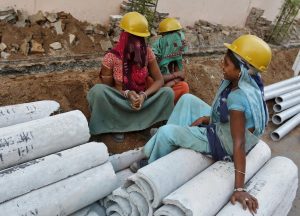
India’s female labour force participation rate (FLFPR) has seen a significant rise in recent years.
- This seems promising for gender equality, a closer look reveals persistent challenges in employment quality, wages, and sectoral distribution for women.
- FLFPR includes women who are either employed or actively seeking work. The rise in this metric does not necessarily reflect improved economic inclusion if the work is unpaid or non-remunerative.
- According to the Periodic Labour Force Survey (PLFS) (2023-24), the FLFPR declined from 31.2% in 2011–12 to 23.3% in 2017–18, marking a period of withdrawal of women from the labour market.
- However, it rose sharply to 41.7% in 2023–24, suggesting renewed female engagement in economic activity.
- The share of rural women in agriculture rose from 71.1% in 2018–19 to 76.9% in 2023–24, while their presence in the industrial and service sectors declined.
- Between 2017–18 and 2023–24, women reporting “domestic duties” declined from 57.8% to 35.7%, but “helpers in household enterprises” rose from 9.1% to 19.6%, and “own account workers and employers” from 4.5% to 14.6%.
People’s Plan Campaign (PPC) 2025–26:
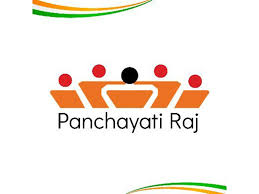
The Ministry of Panchayati Raj launched the People’s Plan Campaign (PPC) 2025–26: “Sabki Yojana, Sabka Vikas” across all States and Union Territories.
PPC 2025–26 Highlights:
- Gram Sabhas will review previous GPDPs using eGramSwaraj, Meri Panchayat App, and Panchayat NIRNAY, assess progress, address delays, and prioritize unfinished projects, especially those linked to unspent Central Finance Commission grants.
- The process will be guided by the Panchayat Advancement Index (PAI), supported by SabhaSaar, with a focus on improving Panchayats’ Own Source Revenue (OSR) and enhancing community participation.
- The campaign focuses on tribal empowerment via Adi Karmayogi Abhiyaan, enhancing transparency, accountability, and inclusive rural development.
- The campaign initiates the nationwide process of preparing Panchayat Development Plans (PDPs) for the Financial Year 2026–27.
- People’s Plan Campaign (PPC) was launched on 2nd October 2018, the PPC (also known as jan yojana abhiyan) aims to strengthen participatory, transparent, and accountable local governance by involving citizens in preparing Panchayat Development Plans (PDPs) at the Gram, Block, and District levels.
- Objectives is to Prepare inclusive and convergent development plans (Gram PDPs, Block PDPs, District PDPs).
- The campaign seeks to achieve effective localization of Sustainable Development Goals (SDGs) by integrating the nine thematic approaches of LSDGs into PDPs and by incorporating Village Prosperity and Resilience Plans (VPRPs) prepared by Self-Help Groups (SHGs) federations.
- It ensures transparency through public information campaigns and Gram Sabha disclosures.
- According to the eGramSwaraj Portal, as of July 2025 more than 18.13 lakh PDPs have been uploaded from 2019–20 to 2025-26.
Toxic Chemical Diethylene Glycol in Cough Syrup:
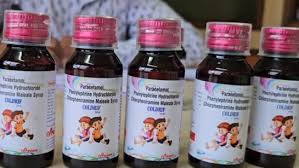
The Food and Drugs Administration (FDA), Bhopal, found that Coldrif cough syrup contained 46.28% Diethylene Glycol (DEG), far exceeding the permissible limit of 0.1%.
- The finding led to state-level bans and triggered nationwide regulatory action under the Drugs and Cosmetics Act, 1940.
- Diethylene Glycol (DEG) is a colourless, sweet-tasting industrial chemical commonly used in brake fluids and antifreeze.
- It is misused as a cheap substitute solvent in drug production owing to its close physical similarity to safe pharmaceutical compounds.
- Consumption of DEG can cause abdominal pain, vomiting, kidney failure, and nervous system damage, and may be fatal at high doses.
- Drugs and Cosmetics Act, 1940 regulates the import, manufacture, sale, and distribution of drugs and cosmetics in India through licences and permits.
- Its main aim is to ensure that marketed drugs and cosmetics are safe, effective, and meet national standards.
- The Drugs and Cosmetics Rules, 1945, complement the Act by classifying medications into schedules and providing guidelines for their storage, sale, presentation, and prescription.
The State of Social Justice 2025:
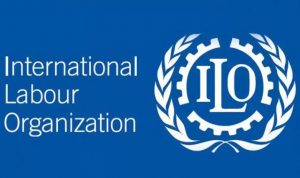
The International Labour Organization (ILO) released its landmark report The State of Social Justice: A Work in Progress (2025) ahead of the Second World Summit for Social Development marking 30 years since the 1995 Copenhagen Summit.
- “The State of Social Justice 2025” Purpose is to Evaluates 30 years of global progress since the 1995 Social Development Summit and assesses ongoing deficits in justice, equality, and inclusion.
- Four Foundational Pillars:
- Fundamental human rights and capabilities — ensuring freedoms, equality, and social protection.
- Equal access to opportunities — removing barriers to education, employment, and fair wages.
- Fair distribution — equitable sharing of economic growth benefits.
- Fair transitions — managing environmental, digital, and demographic changes inclusively.
- Global Progress:
- Extreme poverty fell from 39% (1995) to 10% (2025).
- Child labour (5–14 years) declined from 250 million to 106 million.
- Working poverty dropped from 28% to 7%.
- Over 50% of the global population now covered by some form of social protection.
- Persistent Inequalities:
- Top 1% control 20% of global income and 38% of wealth.
- Gender wage gap: Women earn 78% of men’s wages; at current pace, it will take 50–100 years to close.
- 55% of income inequality determined by country of birth, showing global location bias.
- Erosion of Trust: Confidence in governments, unions, and businesses has declined since 1982 due to perceptions of unfair reward systems and widening inequality.
International Stabilization Force for Gaza:

The International Stabilization Force for Gaza (ISF) was proposed under U.S. President Donald Trump’s 20-point Comprehensive Plan to End the Gaza Conflict (2025).
- The ISF is a proposed multinational security force intended to maintain stability and oversee security transition in post-war Gaza.
- It will function as the temporary internal security component of a “technocratic, apolitical Palestinian transitional committee” under U.S. oversight.
- The ISF will be controlled and overseen by the United States, under the direct supervision of the “Board of Peace” chaired by U.S. President.
- Aim is to demilitarize Gaza, prevent the re-emergence of Hamas or armed militias, and create conditions for a transitional Palestinian governance framework, to enable phased Israeli military withdrawal from designated “terror-free” areas of Gaza.
- Functions:
- Maintain law and order in areas vacated by the Israeli Defense Forces (IDF).
- Oversee the confiscation and destruction of Hamas weaponry and block arms smuggling routes.
- Build and train a reformed Palestinian police force to handle future internal security.
- Set and verify milestones and timelines for demilitarization and withdrawal.
- Work under a “Board of Peace” chaired by Trump, involving Arab and international partners, but not under the UN mandate.
Trade Watch Quarterly Report:
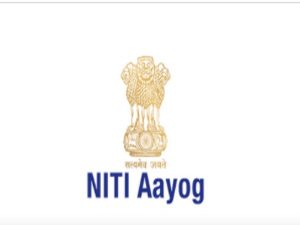
NITI Aayog released the fourth edition of its “Trade Watch Quarterly” report for Q4 of FY 2024–25 in New Delhi.
- It is a flagship analytical publication by NITI Aayog that tracks India’s quarterly trade performance, covering both merchandise and services sectors.
Recent Trade Trends (FY25):
- Total Trade: $1.73 trillion (+6% YoY) — Exports: $823 billion, Imports: $908 billion.
- Services Exports: Reached a record $387.5 billion, led by IT, aviation, and financial services.
- Regional Trends:
- North America emerged as India’s top export market, accounting for 25% of exports (+25% YoY).
- EU, GCC, and ASEAN markets showed slower growth
Trade Watch Quarterly Report:
- Published by: NITI Aayog
- Aim is to provide evidence-based insights on trade patterns, export competitiveness, and sectoral challenges,to guide policy interventions for strengthening India’s manufacturing base, boosting exports, and enhancing participation in global value chains (GVCs).
- Key Features:
- Covers trends in merchandise, services, and regional trade; identifies key drivers and bottlenecks.
- Provides region-wise and product-wise trade breakdowns to support policy planning and trade negotiations.
The Tigers Outside Tiger Reserves (TOTR) Project:

During Wildlife Week 2025 celebrations at the Forest Research Institute (FRI), Dehradun, Union Environment Minister launched five major conservation projects and four national-level wildlife monitoring programmes.
- The Tigers Outside Tiger Reserves (TOTR) is a new national-level initiative by the Ministry of Environment, Forest and Climate Change (MoEFCC) and the National Tiger Conservation Authority (NTCA).
- The project will be implemented over 2025–28, with a total outlay of ₹88.7 crore, coordinated centrally by NTCA and executed through state forest departments.
- Aim is to reduce human–tiger conflicts in non-reserve landscapes by ensuring safe coexistence between people and dispersing tigers, o protect tigers that move beyond reserve boundaries due to habitat fragmentation, growing populations, and shrinking corridors, to foster a landscape-level conservation approach, balancing ecological sustainability with human safety and livelihoods.
Key Features of the Project:
- Encompasses 80 forest divisions in 17 tiger-range states, including Madhya Pradesh, Maharashtra, Karnataka, Uttarakhand, Assam, Kerala, Tamil Nadu, West Bengal, and Arunachal Pradesh.
- Focuses on buffer and corridor areas adjoining high-density tiger reserves.
- Deployment of AI-based early warning systems, camera traps, GPS-enabled patrolling, and data analytics for wildlife tracking.
- Formation of Rapid Response Teams (RRTs) with local youth, equipped with rescue tools, tranquilization gear, and vehicles.
- Launch of “Bagh Mitra” (Tiger Friends) outreach programmes and jungle camps for students to promote coexistence.
- NTCA will oversee project implementation.
- Chief Wildlife Wardens (CWLWs) and State CAMPA authorities will manage funds and execution at the ground level.
UNESCO Elect New Chief:
UNESCO’s Executive Board has elected Egypt’s Khaled El-Enany, as the new Director-General of the organization for a four-year term, succeeding France’s Audrey Azoulay.The Director-General of UNESCO (United Nations Educational, Scientific and Cultural Organization) is the organization’s top executive authority responsible for implementing the decisions of the General Conference and Executive Board. The position carries a four-year term, renewable once, and plays a key role in shaping UNESCO’s global agenda on education, culture, science, and heritage preservation.
Sanju Samson Named EPL Ambassador for India:
Indian cricketer Sanju Samson has been named the official ambassador for the English Premier League (EPL) in India. The move marks a major step in the EPL’s strategy to expand its presence in the Indian subcontinent by leveraging local sports icons with pan-India appeal. The EPL has chosen Samson for his Strong social media reach and Proven track record as a sportsperson.
India Launches UPI at Supermarkets in Qatar:
UPI (Unified Payments Interface) has been launched at Lulu Group’s supermarkets in Qatar. The launch was led by Commerce and Industry Minister Piyush Goyal, and comes just weeks after UPI was introduced at Hamad International Airport’s duty-free stores. With this, Qatar becomes the eighth country to adopt UPI, bolstering cross-border trade, travel, and financial integration.The new launch enables real-time, low-cost digital transactions at all Lulu Group outlets across Qatar, allowing Indian residents, tourists, and businesses to make payments using India’s homegrown UPI system.
The initiative is spearheaded by NPCI International Payments Ltd (NIPL), in partnership with Qatar National Bank (QNB) and Japanese payment gateway NETSTARS.
Amit Shah Launches Goa’s ‘Mhaje Ghar’ Scheme to Grant Home Rights:
Union Home Minister Amit Shah today unveiled Goa’s ‘Mhaje Ghar’ Yojana at a ceremony in Taleigao, intending to legalise homes built on government and community land and confer ownership rights on long-standing residents. Major infrastructure and institutional projects worth over ₹2,452 crore were also inaugurated.Under Mhaje Ghar, certificates, sanads, and orders are being distributed under acts such as the Goa Land Revenue Code, Goa Regularisation of Unauthorized Constructions Act, and Forest Rights Act. Goa plans to regularise houses built before February 28, 2014 on government land, alvara, lease areas, and comunidade (community) land.For houses on comunidade land, consent of comunidade and compensation to comunidade may be required.The scheme includes a 20-year no‑transfer clause on regularised properties and legal penalties for false declarations.
Officials such as police, mamlatdar, talathi, panchayat secretaries, and deputy collectors will be empowered to curb fresh encroachments after launch.
Nobel Prize in Physics 2025:
The 2025 Nobel Prize in Physics was awarded to John Clarke, Michel H. Devoret, and John M. Martinis for discovering macroscopic quantum mechanical tunnelling and energy quantisation in an electric circuit. Their groundbreaking work proved that quantum phenomena extend beyond microscopic particles.Their work proved that quantum phenomena can occur even in large-scale systems, bridging the gap between the quantum and classical worlds and paving the way for advanced technologies like quantum computing, cryptography, and sensors.
- John Clarke – University of California, Berkeley, USA
- Michel H. Devoret – Yale University, New Haven, CT / University of California, Santa Barbara, USA
- John M. Martinis – University of California, Santa Barbara, USA




